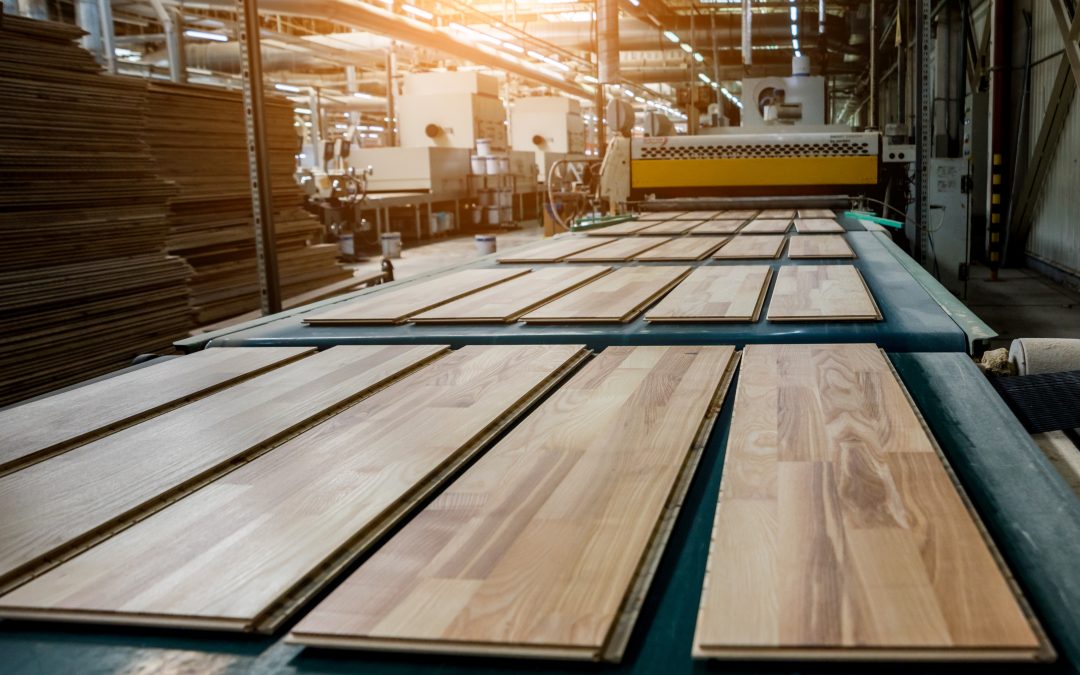When it comes to hardwood flooring, the journey from forest to floor is a lengthy one and the steps and options in the process impact cost, appearance and durability.
Hardwood flooring begins, of course, with hardwood trees. All species of tree are rated for hardness on the Janka scale. Trees rated 950 or higher on this scale are suitable for making hardwood flooring. One of the most common tree species for flooring is the red oak – it grows in abundance in the US and has an ideal Janka rating of 1290. Other varieties of tree that are often used for hardwood floors include oak, hickory/pecan, maple, bamboo, walnut and cherry. Generally, these varieties are categorized either as domestic (grown in the US) or exotic (imported from elsewhere).
Once a suitable hardwood tree is cut into logs, they are assessed for their natural beauty, tight grain and general lack of knots. Logs that meet these criteria can be processed into planks or veneer for solid or engineered hardwood floors.
Solid hardwood floors are made from single piece planks of wood. These are typically plain sawn and planed smooth and level on all sides. A tongue and groove is cut along the edges for future installation. The planks are distressed by hand scraping or by machine and then sent prefinished or unfinished for installation in your home. Prefinished planks allow for easier installation in the home, and are especially popular for those seeking a DIY option or a quicker installation process. Unfinished planks require a lengthier (and messier) installation, but the finished result is a smooth, uniform look.
Engineered hardwood is made by gluing together wood plies – the more plies in the resulting plywood, the higher the stability and cost of the resulting flooring. For greatest stability, high density fiberboard may also be used. The plywood or board is topped with a veneer of hardwood. The veneer will range in thickness from .6 to 6mm. The thicker the veneer, the higher the durability and the cost. Veneer over 2mm thick can be sanded and refinished down the road, further increasing its life span. There are 3 methods used to create the veneer which vary in stability, appearance, and cost. Dry solid sawn is the longest and most expensive method – the wood is allowed to dry out slowly before being thinly sliced to create the veneer. This method delivers the closest look and feel to solid wood in engineered hardwood flooring. Rotary peel and sliced peel are faster processes in which the wood is boiled and prepared and then peeled from around the log or from end to end. The resulting thin wood is pressed to create a veneer that is attached to the plywood base. Peeled wood is less stable and can be prone to cupping – particularly rotary peel. The grain of peeled wood is also less natural in its appearance.
Once the planks of wood are assembled, the edges are milled with tongue and groove construction or for a glueless click-lock installation. They are sealed and stained in the factory and are then ready for installation.
Engineered hardwood can be made more durable by impregnating the veneer with acrylic. When all sugars and sap are removed from the wood veneer, an open structure remains. Liquid acrylic can then be forced into the wood to support that structure for longterm strength. When hardwood floors are to be installed in a high traffic area, acrylic impregnation is an excellent option to consider for the life of the floor.
Producing hardwood flooring is a complex process! Our flooring experts can help you navigate the options and select the best hardwood for your space, your style and your budget. They can also make sure it is installed properly to give you a classic look for years to come. Contact us at Floorzone and let us help you!

